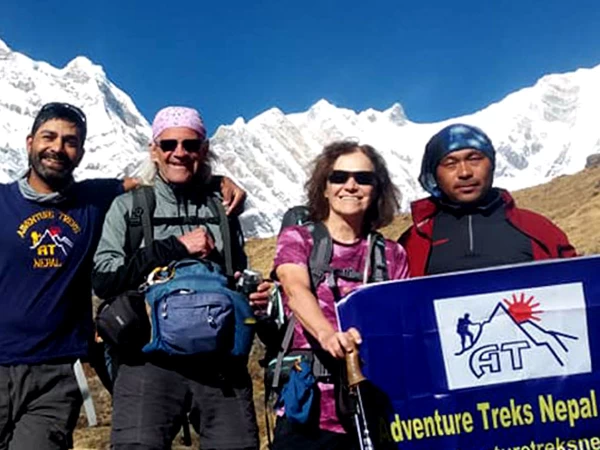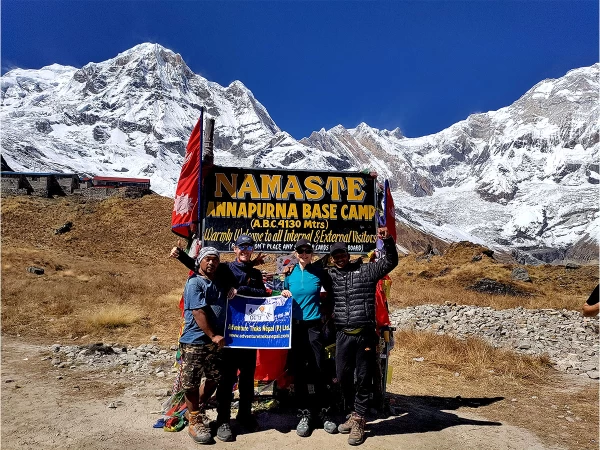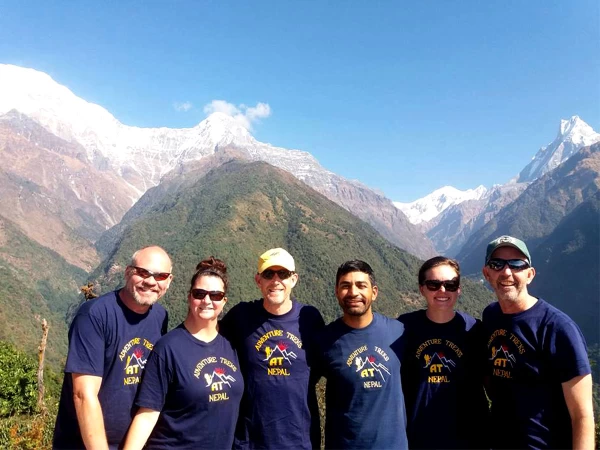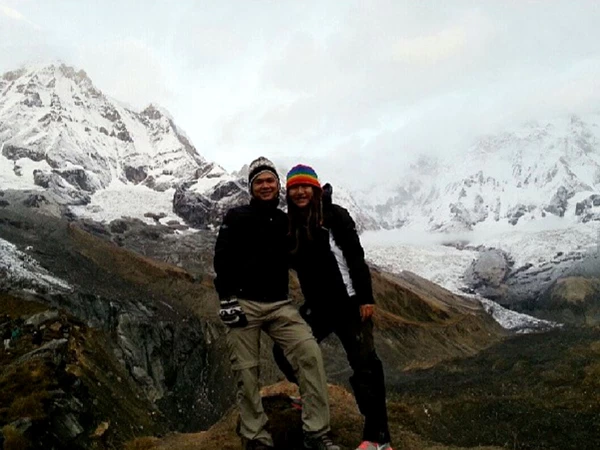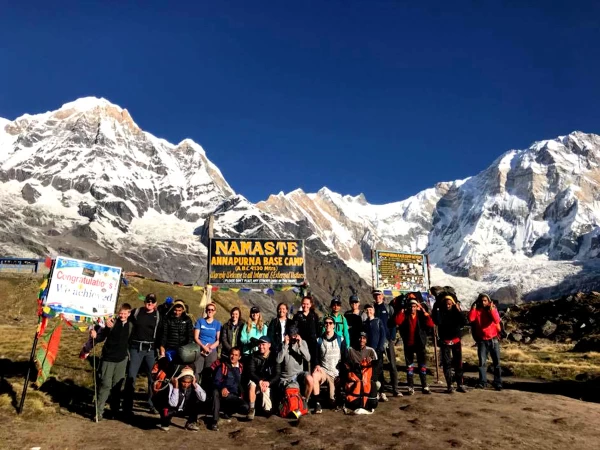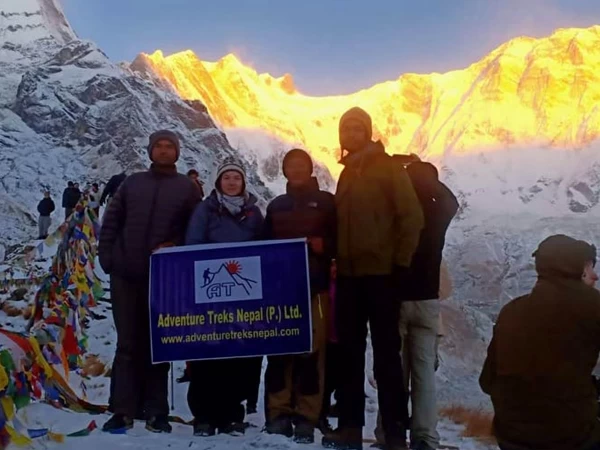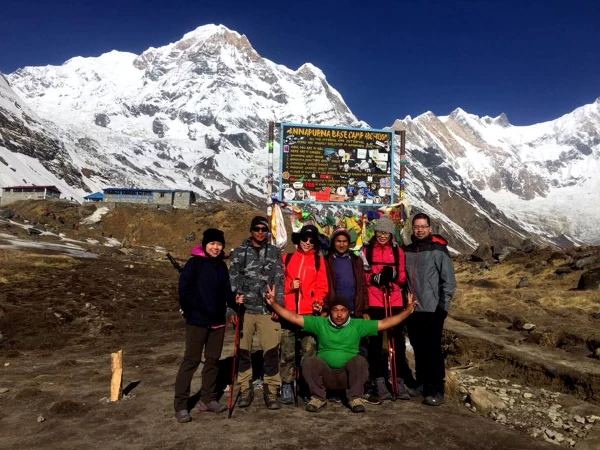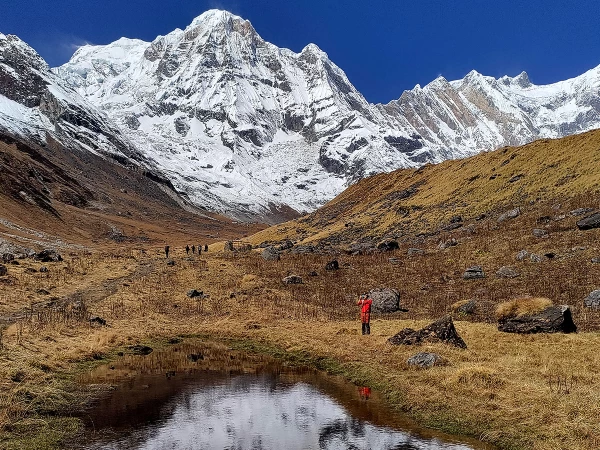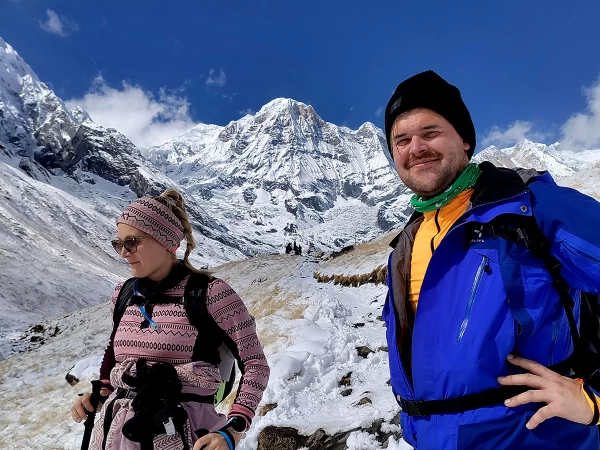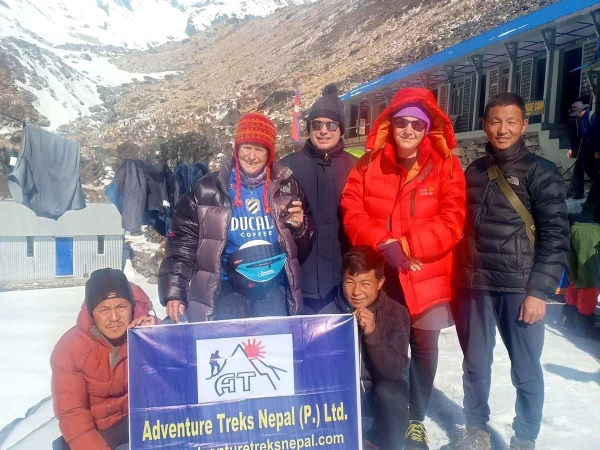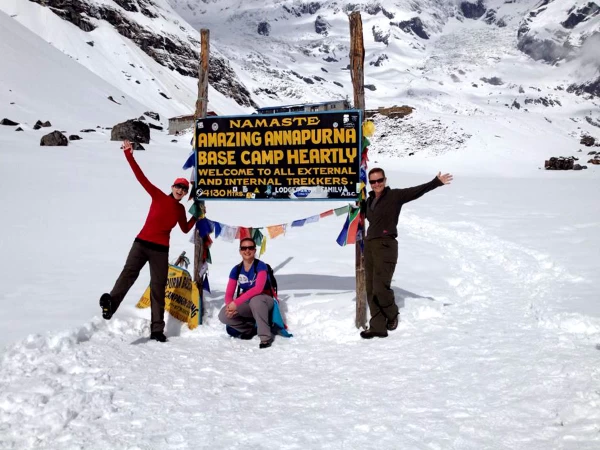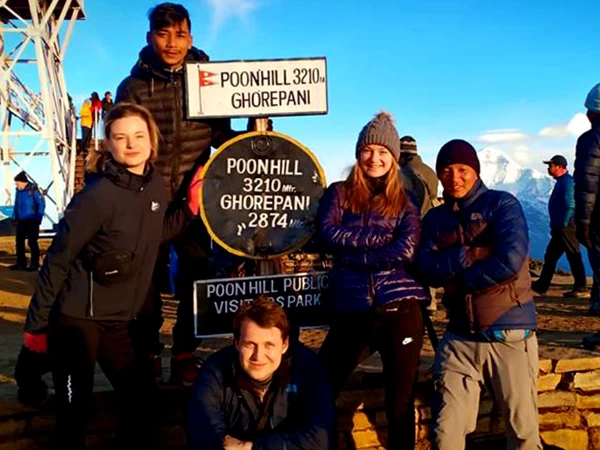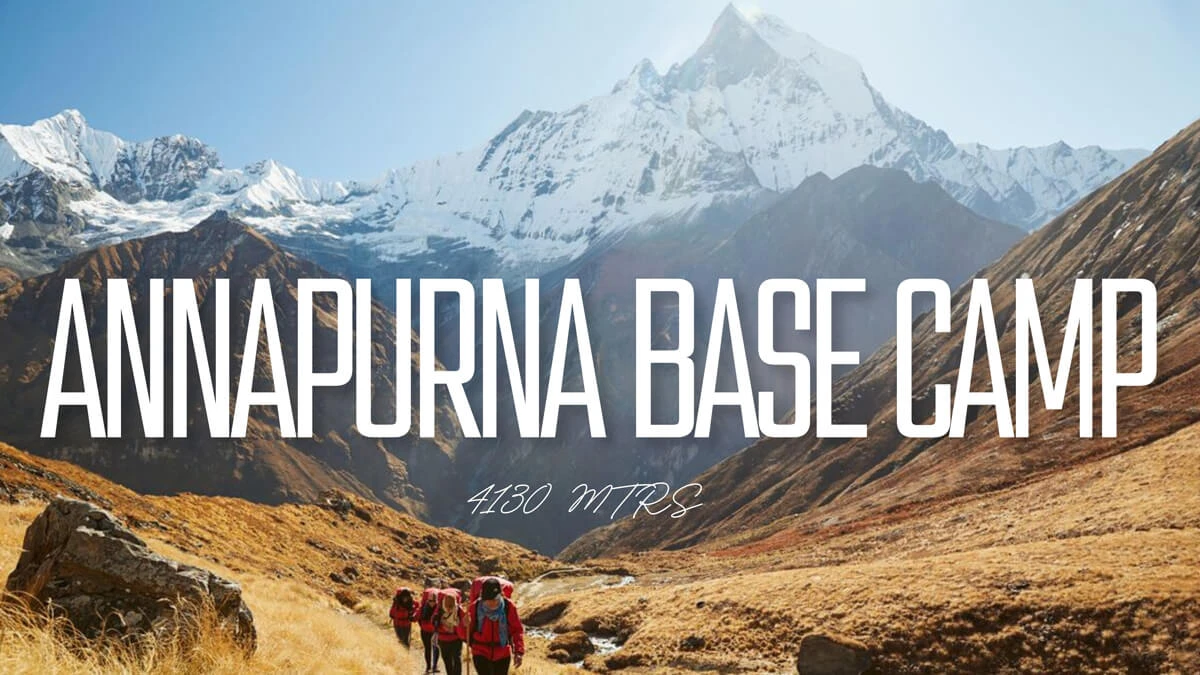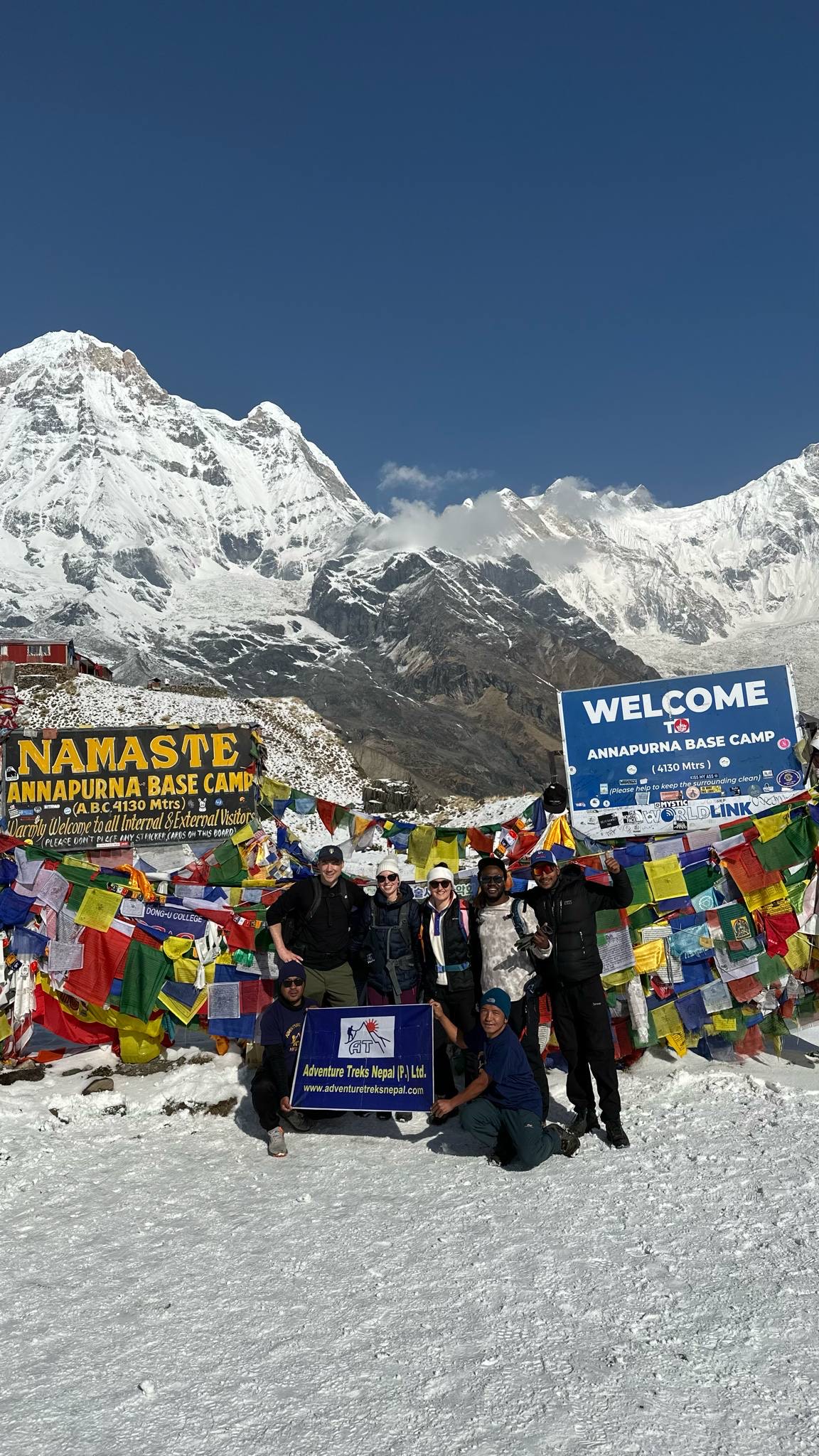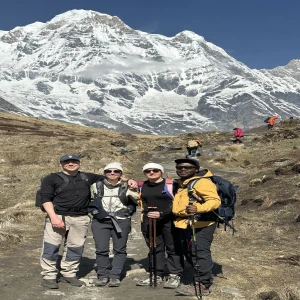Annapurna Base Camp Trek in the mid-western part of Nepal is a popular trekking destination for travelers from all over the world. The amazing vistas of the Himalayas along with culture and tradition of the locals make this journey an outstanding trekking experience in Nepal. Annapurna Base Camp trekking offers you the lavish views of Dhaulagiri (8,167m), Tukuche Peak (6,920m), Nilgiri North (7,061m), Nilgiri Centre (6,940m), Nilgiri South (6,839m), Annapurna I (8,091m), Fishtail (6,993m Machhapuchhre), Gangapurna, Tent Peak, Annapurna South (7,647m), Hiunchuli, Annapurna IV (7,525m), Annapurna II (7,937m), Lamjung Himal (6,988m), Manaslu (8,156m) and many other trekking peaks along with beautiful sunset and sunrise.
Annapurna Base Camp trail takes us through some of the dense forests of the Annapurna Region where the trekkers will encounter many springs and rivers. Crossing these rivers on small bridges will provide a sense of adventure to the travelers from all over the world. During the March- April (Spring Season), the trail is filled with blooming Rhododendron (national flower of Nepal) which adds to the beauty of the region.
At an altitude of 4,130m, Annapurna Base Camp trek is a moderate level hiking trail which can be done by people of all age. Adventure Treks Nepal has been able to operate Annapurna Base Camp trek for groups with Kids to Senior Citizens. No matter which age group you are from, if planned properly Annapurna Base Camp Trek can be conquered by everyone.
The initial stage of Trek winds up through the settlement of Ulleri, Nangethati towards Ghorepani from where an early morning sunrise will provide you an awe- inspiring view of the Himalayas from Poonhill. If you are trekking to Annapurna Base Camp we request you not to miss the Sunrise from Poonhill.
Crossing many rivers and springs on Suspension and wooden bridges, the trail gradually climbs up towards Himalaya via Chhomrong and Sinuwa. The vegetation after Himalaya gradually changes and becomes thinner as we will be approaching above the tree line. From Deurali the trees become smaller and the trekkers will step into the Grassland up until Annapurna Base Camp.
Along the route, we will pass the Machhapuchre Base Camp (Fishtail Base Camp). Mt. Fishtail is an unclimbed mountain and is dedicated to lord Shiva. With its difficult terrain and religious value, the Government of Nepal doesn't issue permits to anyone to summit this mountain.
With various extraordinary views of Himalayas, terraced fields and valleys, Annapurna Base Camp Trek can be an ideal destination for travelers seeking for Adventure into nature. Passing different Chortens, Stupas and Temples along the way is like a bonus to everyone trekking in Annapurna Sanctuary Region.
Annapurna Base Camp Trek Highlights
- Sunrise from Poonhill (3,210 m) which is regarded as one of the best sunrise spot in Nepal with Panaromic view of Dhaulagiri and Annapurna Range including two of the 8000ers of the world. i.e Dhaulagiri (8,167m ) and Annapurna I (8,091m).
- 360 degree view of the Himalayas from Annapurna Base Camp including Annapurna South, Annapurna I, Singha Chuli, Mt. Machhapuchre (Fishtail) and more.
- Trekking through the local settlements of Poon and Gurung community.
- Natural Hot Spring at Jhinu which heals your aching body after the trek.
- Amazing view of the Glaciers and river flowing from the glacier of Annapurna Range.
- Diversified flora and fauna along the trail.
- Getting along with the locals and learning about their culture and tradition.



